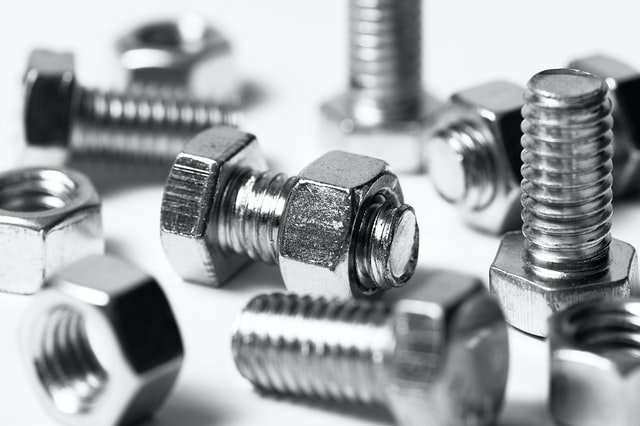Screw loosening can sometimes happen when screws come loose from a thread. This can not only be annoying, it can even be life-threatening in some places.
We explain why this happens and what screw locking options there are to prevent loosening.
Why are screws loosening?
Screws can loosen when the so-called pre-tensioning force decreases. Simply put, this means the pressure between the external and internal threads created when screwing. This can happen for 3 main reasons:
Screws loosening reason 1: Vibrations in the component
Vibrations lead to the slightest friction in the screw connection. These “smooth” the surfaces of the external and internal threads, so to speak, and cause the pressure between the elements to decrease, thereby loosening the screw.
Screws loosening reason 2: Corrosion
Rust can cause the material inside the screw connection to degrade, thereby loosening the screw connection.
Screws loosening reason 3: Loss of connectivity
The expression sounds more complicated than it is. To put it simply: The principle is the same as with a metal spring, which “wears out” if you stretch it out over a longer period of time. The tension between the external thread of the screw and the internal thread of the component diminishes over time due to the deformation or adaptation of the elements.
How can you prevent loosening?
There are various ways of creating a screw connection so that loosening is prevented as well as possible. Here are our recommendations:
Use of lock nuts
A lock nut with a characteristic plastic ring. Lock nuts look similar to normal hexagon nuts – with one small but useful difference: They have a plastic ring inside the internal thread.
When a screw is screwed into the nut, this ring deforms and gives the screw connection an additional hold.
Caution: As the plastic ring deforms, lock nuts can only be used once, unlike other nuts.
Serrated lock washers
Serrated lock washers offer a particularly good hold thanks to their special shape. Serrated lock washers are eye-catching simply because of their concise shape.
You drill them into the surfaces of the component and the screw head/nut as you tighten the connection.
This increases the frictional resistance considerably.
Spring washers and disc springs
All four, like the serrated lock washers, find their place below the screw head or below a nut depending on the design.
However, they differ in their mode of operation, which does not increase the frictional resistance between the bearing surfaces, but rather they generate additional pressure against the screwing direction due to their inherently resilient shape.
This increases the pre-tensioning force and makes it much more difficult to loosen the fastening element.
Plastic washers
At first glance, it may not be immediately obvious why plastic washers prevent the screw from loosening better than other metal washers do.
A quick comparison: Imagine you have a plastic stick in your hand and hit a hard object with it. In comparison, imagine you are doing this with a metal rod.
The metal rod would continue to vibrate for a few seconds – the plastic rod would largely absorb the vibrations. We find the same principle with plastic washers. They absorb vibrations in the construction, reducing the friction between the internal and external threads of the screw connection.
Adhesive
Using a thread locker is also good and, most importantly, an easy option. To do this, simply apply a little glue to the screw thread and screw it in.
This then hardens and also secures the screw connection against loosening. Always pay attention to the required drying time. This can vary greatly from adhesive to adhesive.
Caution: Depending on the adhesive and its strength of hardening, it may be that you cannot loosen the connection afterward without destroying the thread with force. In case of doubt, you should be sure that the screw should stay there 😉

